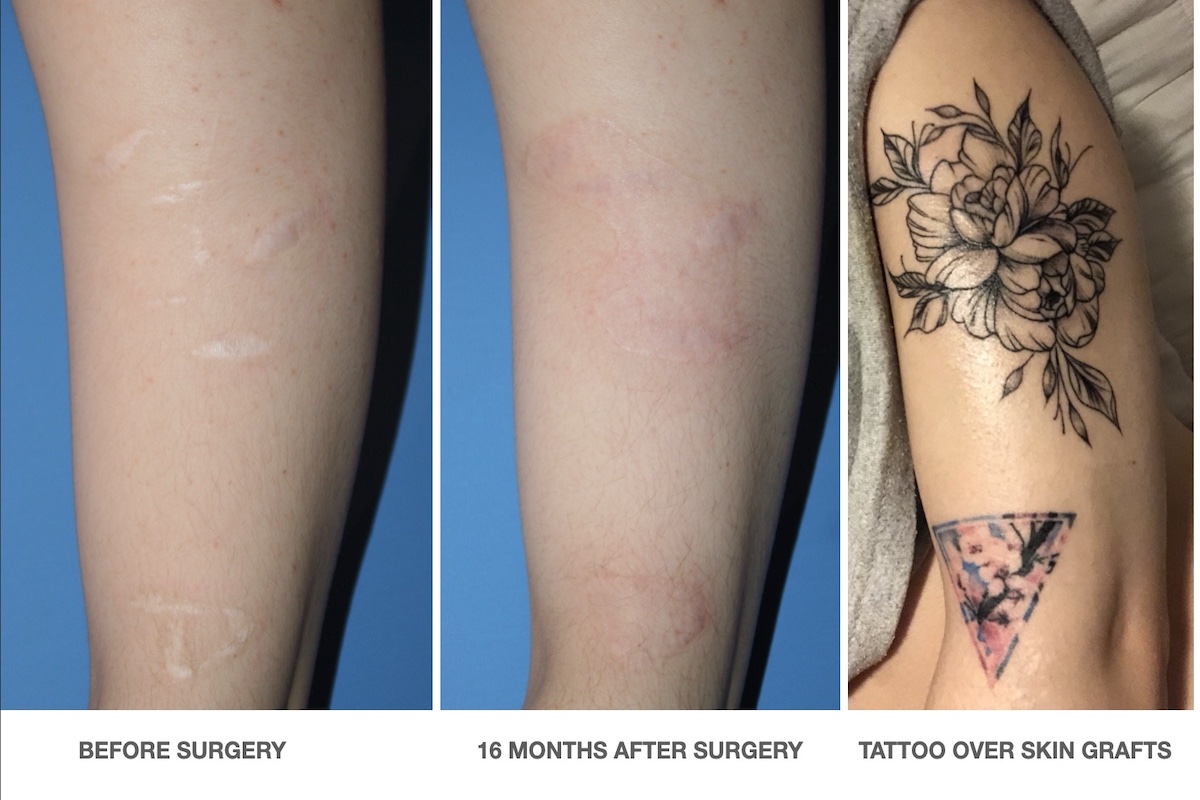The principle of this treatment procedure is;
- Removing the 50-150 micron uppermost skin layer of the scarred area including the intact skin between the scars by dermabrasion.
- Revision of widened scars.
- Covering the raw surface by thin (0.1-0.2 mm) skin grafts (patches) harvested from thigh region to hide the underlying scars.
 Tattoo over skin graft 1
Tattoo over skin graft 1 Tattoo over skin graft 2
Tattoo over skin graft 2 Tattoo Over Skin Graft 3
Tattoo Over Skin Graft 3